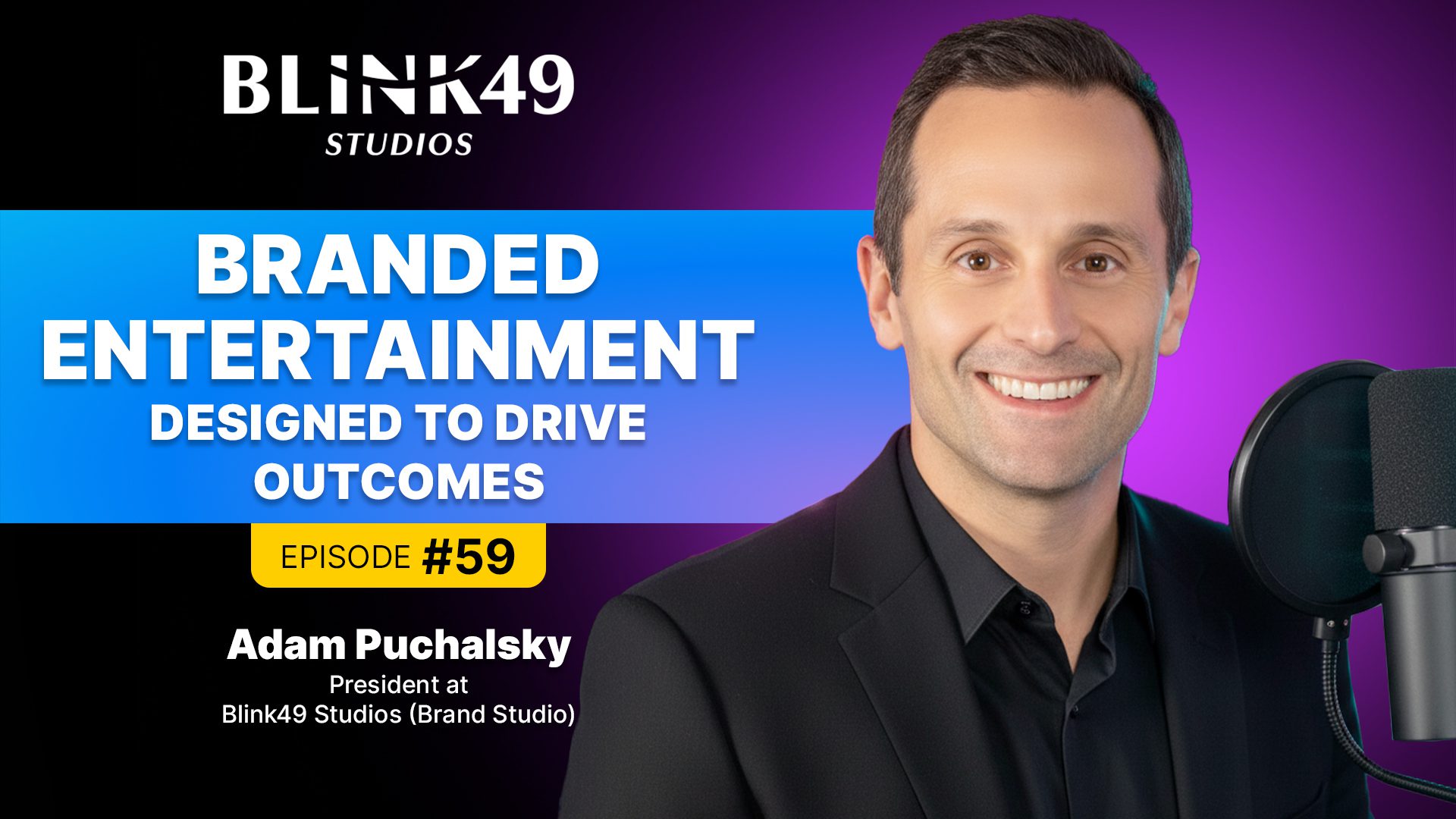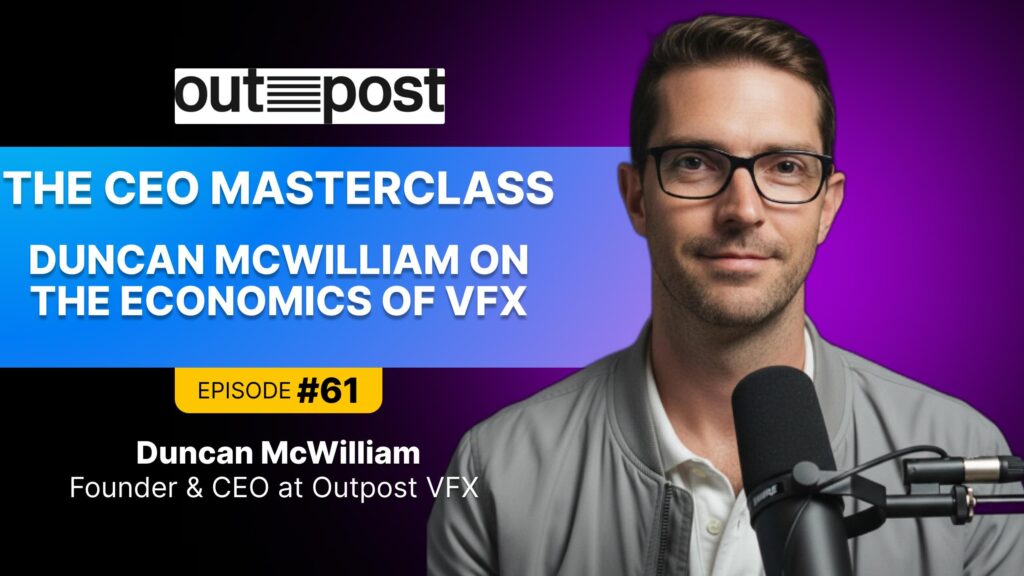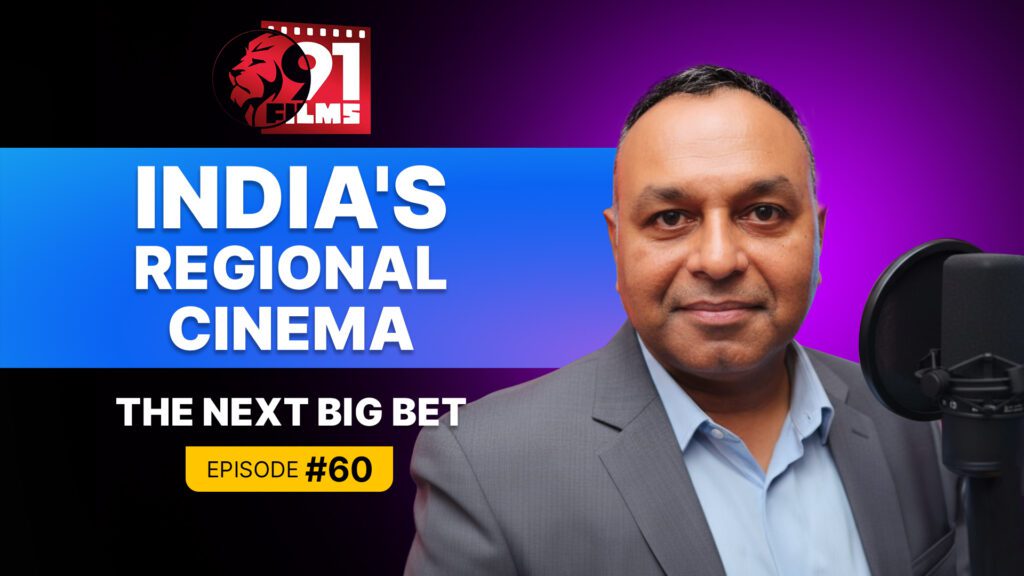In this special episode, we welcome Adam Puchalsky from Blink49 Studios, who is building an innovative brand studio within the company. He shares his vision for how brands can move beyond traditional advertising by engaging in “curation” and “co-creation” to deliver genuine, high-quality entertainment.

Podcast Chapters
| Timestamp | Chapters |
| 00:00 | Introduction to Blink 49 Studios |
| 08:12 | The Role of Brands in Entertainment |
| 11:01 | Blink 49’s Business Model and Future Plans |
| 13:45 | Curation vs. Co-Creation in Brand Integration |
| 16:32 | Innovative Brand Strategies and Case Studies |
| 19:17 | Challenges in Brand-Funded Entertainment |
| 33:15:00 | Global Sensibilities and Market Reach |
| 35:38:00 | Insights from MIPCOM: Brand Storytelling and ROI |
| 39:50:00 | Partnerships and Collaborations in Content Production |
| 47:48:00 | Outlook for 2026: Strategic Partnerships and Monetization |
Key Takeaways:
-
Blink49 Brand Studio’s Dual Focus: The Brand Studio, led by Adam Puchalsky, operates on two tracks: curation, which involves integrating brands into Blink49’s existing slate of shows, and co-creation, which is the development of original brand-funded entertainment.
-
Driving Business Outcomes: The primary goal is for entertainment to drive business outcomes for the brand, not just win awards. Every creative decision in co-creation is informed by clear, measurable business objectives.
-
Talent and Brand Strategy The studio aims to serve the talent Blink49 represents by finding new financiers, development partners, and distribution avenues through brands, positioning the brands as meaningful collaborators rather than just “blank checks”.
-
Collaboration Over Control: The studio’s operating philosophy emphasizes collaboration over control and views everyone, including agencies and production companies, as a potential partner to deliver the best results.
-
Monetization for Brands: Through co-creation, there is a possibility for profit participation and a split of backend revenue for the brand, depending on the deal structure, offering an exciting monetization model outside of traditional ad spends.

Sound Bites:
-
“We want to create a safe space for brands to come and play and learn and grow and participate and develop and produce entertainment that will drive their business outcomes.”
-
“What is more important to me today is making sure that we’re understanding the business problem that brands are looking to solve and coming up with the solution and coming up with a way that entertainment can solve it.”
-
“I fundamentally believe brands are going to be on stage accepting Oscars, Emmys, and Grammys.”
-
“If you start thinking about everything as a media partnership, you’ll be able to sort of come up with new, interesting ideas, again, that audiences will want to consume.”
-
“The way that you tastefully do it is either it adds entertainment value or it doesn’t show up in the show or movie or doc or whatever the manifestation of entertainment is.”
Projects Mentioned in the Podcast
Wild Cards, Beast Games, The Braxtons, Barbie, Lego, Double Dare
Why Partner With Blink49 Studios?
-
Customized Brand Solutions: They offer bespoke solutions through “curation” (brand integration into existing slates) and “co-creation” (original brand-funded entertainment).
-
Focus on Measurable ROI: Their goal is to create entertainment that directly drives business outcomes, using data analysts to measure success beyond traditional metrics like brand affinity.
-
Comprehensive Studio Infrastructure: As a full studio, Blink49 covers production, distribution , and leverages the economic benefits of being headquartered in Canada.
-
Commitment to Collaboration: They actively seek partners (other prod-cos, agencies, talent) to find the best solutions, believing in the philosophy of “collaborate or die“.
-
Potential for Profit Participation: For co-created content, the model includes the possibility of the brand participating in the back end and splitting revenue.
In Conversation with Adam Puchalsky, President at Blink49 Studios (Brand Studio)
This is a summarized, Q&A version of a special podcast episode with Adam Puchalsky of Blink49 Studios. It has been transcribed and organized for quick reading, highlighting key insights into the future of branded entertainment.
1. Vitrina: Can you provide an overview of Blink49 Studios, its origins, and the strategy behind launching the new Brand Studio?
Adam Puchalsky: Blink49 is a Canadian-based company headquartered in Toronto, with offices in LA, Vancouver, and the Brand Studio being built in New York. The founders came from Entertainment One, and their hypothesis was that they could move the industry forward in new ways by tapping into the economic benefits of Canada as the entertainment world changes rapidly. They built a scripted group and an unscripted group. The Brand Studio was bolted on not just for new revenue streams, but to deliver content and serve talent by introducing new financiers, development partners, and distribution avenues, making brands a collaborative part of the array.
Quote: “The folks who founded Blink 49 originally came from a company called Entertainment One… their hypothesis was the entertainment world is changing at a rapid pace and being able to tap into the economic benefits of Canada, they could actually help move the industry forward in new and interesting ways.”
2. Vitrina: What are the current business verticals and notable productions from Blink49 Studios?
Adam Puchalsky: The company is in the entertainment business. They have an unscripted group that produced shows like Beast Games and The Braxtons. The scripted team has also had success, producing a show called Wild Cards, which is available in the US on the CW and on Prime Video.
Quote: “The scripted team does a ton of work in Canada and they’ve had some breakthrough success outside of Canada. For example, They produced a show called Wild Cards, which is also available in the US on the CW and the next hand on Prime Video.”
3. Vitrina: How does your past experience in advertising agencies and media content studios inform your current vision for the Brand Studio, and what is your core belief about the future of branded entertainment?
Adam Puchalsky: My career started with 10 years at advertising agencies like JWT, BBDO, McGarry Bowen, and Ogilvy. Later, I ran a content studio for an IPG media agency, learning about distribution, partnerships, and collaboration instead of control. At WaveMaker, where I was Global Head of Content, I realized brands had a big opportunity to create original IP, and my hypothesis was that brands would be on stage accepting Oscars, Emmys, and Grammys. The core goal now is to understand the brand’s business problem and use entertainment to solve it, focusing on entertainment designed to drive outcomes rather than just creative pursuits.
Quote: “I fundamentally believe brands are going to be on stage accepting Grammys in a few, in a few years. It what I’m trying to do now… is making sure that we’re understanding the business problem that brands are looking to solve and coming up with the solution and coming up with a way that entertainment can solve it.”
4. Vitrina: Can you elaborate on the difference between the traditional advertising model and the distribution/monetization strategy you employ for branded content?
Adam Puchalsky: The traditional advertising model involves the brand spending money to create the asset, and then millions more for people to see it. Our strategy is different; for example, we funded a music video for Magnum condoms that appeared in their chosen rapper’s video, allowing them to tap into culture and reach the same size audience for a fraction of the cost—about $500,000 versus tens of millions of dollars. This leverages existing culture and talent to create something audiences want to consume. With co-created entertainment, brands can participate in the back end through profit participation, which varies depending on when they get involved.
Quote: “And then on top of it, having to pay for distribution. So the way that the traditional commercial advertising model works is the brand spends X number of dollars to make the asset. and then X number of millions of dollars that people actually see it.”
5. Vitrina: The spectrum of brand solutions ranges from a 30-second TVC to a Barbie movie. Can you share some non-traditional examples of branded content that are succeeding?
Adam Puchalsky: For Trojan condoms, who needed to reach 16-to-24-year-old boys over-indexing on audio consumption, we created a brand-funded podcast called The Pleasure is Ours. It became a top three percent globally ranked podcast, funded entirely by the brand, moving product and delivering business outcomes without needing a camera. For Magnum condoms, we invested in funding an up-and-coming rapper’s music video to authentically feature the brand and use the asset for marketing, tapping into hip-hop culture.
Quote: “It could be a podcast. It could be a music video. It could be a coffee table book. You know, all of that’s entertaining. We want to be the ones who are finding the right people, the right collaborators with the brand to get it done.”
6. Vitrina: You describe two approaches: ‘Curation’ and ‘Co-creation.’ Which approach is more challenging to scale and build as a sustainable business?
Adam Puchalsky: Both are challenging, but a Brand Studio is not for every business. The companies that fail are those that treat it as easy, quick revenue. Co-creation is much harder because it requires a high level of trust, sophistication, and risk, and it is off the regular advertising campaign calendar, sometimes taking six, 12, or 18 months. The stakes are higher; if entertainment funded by a brand is not successful, the people involved in getting it funded or produced are vulnerable in their jobs.
Quote: “If you produce entertainment funded by a brand and it’s not successful, those people are vulnerable in their existing jobs. It is a much different stake. So it is much harder to be able to get it funded or get it produced or get it delivered on.”
7. Vitrina: How do you plan to work with other production companies and advertising agencies, and what is your view on the role of measurement and AI?
Adam Puchalsky: We absolutely plan to partner with other production companies’ slates for curation opportunities. The philosophy is “collaborate or die,” believing that bringing everyone in to collaborate—from the idea’s origin to physical production, financing, and distribution—will yield the best result. Agencies bring significant strategic, data, research, and service value, so we view them as potential partners to create customized solutions. For measurement, we are looking at metrics beyond brand affinity, such as Rotten Tomatoes score and social recognition, and anticipate leveraging Artificial Intelligence for pre-testing and reporting.
Quote: “You need to be able to collaborate. And if that means the idea comes from one place and the physical production comes from another and the financing comes from a third and you all come together with a solution, absolutely…”
8. Vitrina: What is the roadmap for the Blink49 Brand Studio in 2026?
Adam Puchalsky: We have two exciting unscripted TV series in the works for next year. However, the focus for 2026 will be on identifying smaller solutions and partnerships that still deliver the expected audience for brands without being big-ticket items. This approach, using a baseball analogy, is about getting “singles and doubles” to keep “driving in runs,” while occasionally swinging for the home run. The outlook is to find interesting partnerships that will be more “direct to fan, direct to consumer” while delivering on the required business outcomes.
Quote: “So I think what I’m going to be spending my time in 2026 doing is identifying partnerships and smaller solutions that still deliver the audience that the brands are expecting, but without being such a big ticket item.”
——————————————————————————————————————————–
A Leader in Branded Entertainment: Blink49 Studios
Blink49 Studios is a Canadian-based entertainment company headquartered in Toronto, with offices in LA and Vancouver. The studio focuses on building a full-service business that includes production and distribution of both scripted and unscripted content. It has also established a Brand Studio, led by Adam Puchalsky, to integrate brands into entertainment through curation and co-creation, offering new financing and distribution avenues.





 Toronto, Canada
Toronto, Canada




